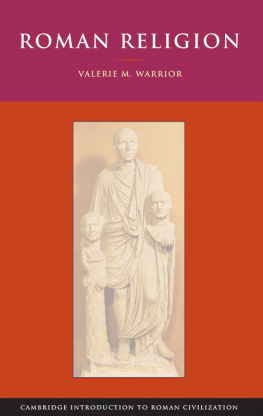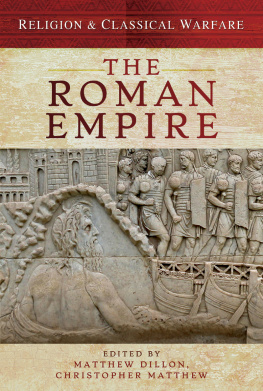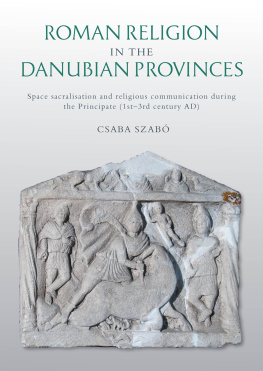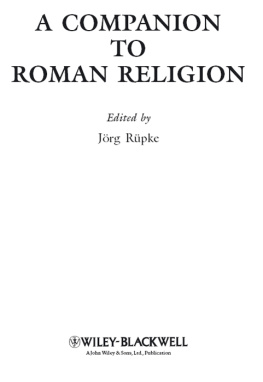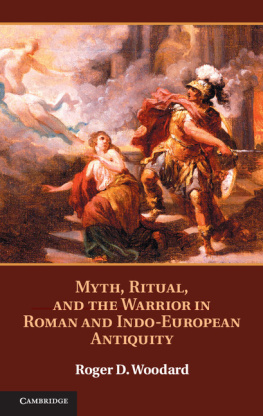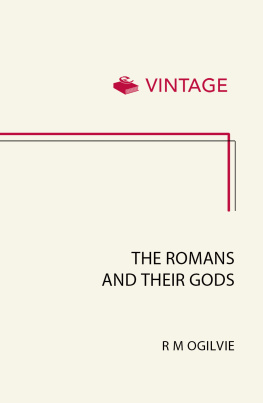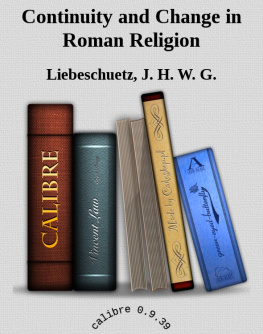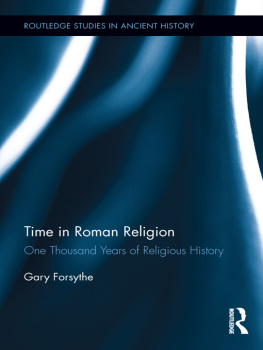Warrior - Roman Religion
Here you can read online Warrior - Roman Religion full text of the book (entire story) in english for free. Download pdf and epub, get meaning, cover and reviews about this ebook. year: 2006, publisher: Cambridge Univ Pr, genre: Religion. Description of the work, (preface) as well as reviews are available. Best literature library LitArk.com created for fans of good reading and offers a wide selection of genres:
Romance novel
Science fiction
Adventure
Detective
Science
History
Home and family
Prose
Art
Politics
Computer
Non-fiction
Religion
Business
Children
Humor
Choose a favorite category and find really read worthwhile books. Enjoy immersion in the world of imagination, feel the emotions of the characters or learn something new for yourself, make an fascinating discovery.
Roman Religion: summary, description and annotation
We offer to read an annotation, description, summary or preface (depends on what the author of the book "Roman Religion" wrote himself). If you haven't found the necessary information about the book — write in the comments, we will try to find it.
Roman Religion — read online for free the complete book (whole text) full work
Below is the text of the book, divided by pages. System saving the place of the last page read, allows you to conveniently read the book "Roman Religion" online for free, without having to search again every time where you left off. Put a bookmark, and you can go to the page where you finished reading at any time.
Font size:
Interval:
Bookmark:
ROMAN RELIGION

This book provides an introduction to the religion and religious practices of ancient Rome. Examining sites that are familiar to many modern tourists, Valerie Warrior avoids imposing a modern perspective on the topic by using the testimony of the ancient Romans to describe traditional Roman religion. The ancient testimony re-creates the social and historical contexts in which Roman religion was practiced. It shows, for example, how, when confronted with a foreign cult, official traditional religion accepted the new cult with suitable modifications. Basic difficulties, however, arose with regard to the monotheism of the Jews and Christianity. Carefully integrated with the text are visual representations of divination, prayer, and sacrifice as depicted on monuments, coins, and inscriptions from public buildings and homes throughout the Roman world. Also included are epitaphs and humble votive offerings that illustrate the piety of individuals and that reveal the prevalence of magic and the occult in the lives of the ancient Romans.
Valerie M. Warrior is a scholar of Greco-Roman history and religion. She has taught at a number of North American colleges and universities and is the author of The Initiation of the Second Macedonian War and Roman Religion: A Sourcebook.
CAMBRIDGE INTRODUCTION TO ROMAN CIVILIZATION

Cambridge Introduction to Roman Civilization is a program of books designed for use by students who have no prior knowledge of or familiarity with Roman antiquity. Books in this series focus on key topics, such as slavery, warfare, and women. They are intended to serve as a first point of reference for students who will then be equipped to seek more specialized scholarly and critical studies. Texts in these volumes are written in clear, jargon-free language and will integrate primary texts into a synthesis that reflects the most up-to date research. All volumes in the series will be closely linked to readings and topics presented in the Cambridge Latin Course.

VALERIE M. WARRIOR

CAMBRIDGE UNIVERSITY PRESS
Cambridge, New York, Melbourne, Madrid, Cape Town, Singapore, So Paulo
Cambridge University Press
32 Avenue of the Americas, New York, NY 10013-2473, USA
www.cambridge.org
Information on this title: www.cambridge.org/9780521825115
Cambridge University Press 2006
This publication is in copyright. Subject to statutory exceptionand to the provisions of relevant collective licensing agreements,no reproduction of any part may take place withoutthe written permission of Cambridge University Press.
First published 2006
Printed in Hong Kong by Golden Cup
A catalog record for this publication is available from the British Library.
Library of Congress Cataloging in Publication Data
Warrior, Valerie M.
Roman religion / Valerie M. Warrior.
p. cm. (Cambridge introduction to Roman civilization)
Includes bibliographical references.
ISBN 0-521-82511-3 (hardcover) ISBN 0-521-53212-4 (pbk.)
1. Rome Religion. I. Warrior, Valerie M. II. Series.
BL803.W372006
292.07 22pcc 2005023912
ISBN-13 978-0-521-82511-5 hardback
ISBN-10 0-521-82511-3 hardback
ISBN-13 978-0-521-53212-9 paperback
ISBN-10 0-521-53212-4 paperback
Cambridge University Press has no responsibility for the persistence or accuracy of URLs for external or third-party Internet Web sites referred to in this publication and does not guarantee that any content on such Web sites is, or will remain, accurate or appropriate.



This book offers an introduction to the religion of ancient Rome through the early second century CE, using a selection of different kinds of ancient testimony to portray Roman action and opinion in areas that they or we would call religion literary texts, epigraphic and numismatic evidence, together with visual representations of surviving artifacts. No background in Roman history is assumed, but readers are urged to consult the revised third edition of the Oxford Classical Dictionary, ed. Simon Hornblower and Antony Spawforth (2003), which contains articles by the foremost scholars of Roman religion and history.
The commentary on the ancient testimony is organized thematically and more or less chronologically within each theme. Putting these various sources together, however, does not produce a picture of Roman religion at any specific time but rather a patchwork of disparate sources of different dates. Consider the source is a maxim that must be constantly kept in mind. The traditional date of the foundation of Rome is 753 BCE, but the Roman literary sources date no earlier than the late third century BCE. Many of the stories concerning early Roman religion derive from authors writing several centuries after the events they purport to describe. First we must ask: who is the author, in what genre is he writing, when did he live, and how far removed in time is he from the events he is describing?
Inscriptions and coins offer evidence that is more or less contemporaneous with the event described or commemorated. Epitaphs from tombs yield valuable information about the lives of ordinary people who would not otherwise have found their way into the history books. The physical remains of temples, shrines, and altars frequently bear representations of religious ceremonies with details of various rituals that supplement the information given in the literary sources. Votive offerings, such as mass-produced figurines or models of various parts of the human body, give insight into the religious practices of the poorer classes of society.
Roman religion is very different from most of the contemporary religions with which we are familiar. Thus there is a risk of being influenced by our own preconceptions about the components of a religion. For instance, an ethical element is generally absent. As Cicero (10643 BCE) remarks, when the Romans wanted to be informed about what was morally right, what was morally wrong, and what was neither one nor the other, they turned to philosophers for answers, not to diviners, whose task was to interpret the will of the gods (On Divination 2.1011).
Divination, seeking the gods will through the interpretation of signs believed to have been sent by them, reflects a natural human desire to ascertain the future, especially in times of crisis and uncertainty. The Romans were no exception to this generalization. Numerous literary references attest to the presence of seers, soothsayers, and prophets, all eager to serve both the state and private individuals. The gods will was sought before initiating any public business either in Rome itself or abroad. The different signs by which the gods were thought to reveal their will included thunder, lightning, the behavior of birds, the observation of the entrails of sacrificial victims, unusual phenomena such as monstrous births, the interpretation of dreams, prophecies, oracles, and the drawing of lots (Cicero,
Next pageFont size:
Interval:
Bookmark:
Similar books «Roman Religion»
Look at similar books to Roman Religion. We have selected literature similar in name and meaning in the hope of providing readers with more options to find new, interesting, not yet read works.
Discussion, reviews of the book Roman Religion and just readers' own opinions. Leave your comments, write what you think about the work, its meaning or the main characters. Specify what exactly you liked and what you didn't like, and why you think so.

